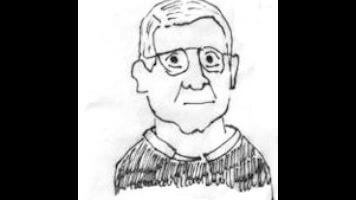
The very first page of Dear Mister Essay Writer Guy acknowledges a reader’s potential uncertainty and sets the tone for the book:
Perhaps you are standing in the bookstore, scanning this introductory chapter, wondering just what sort of book you have in hand. You are a good-looking person whose minor flaws seem to only accentuate your considerable charm. You are intelligent. And immune to flattery.
How comforting to know my vanity is in fact charming! But lest you get swept too far away by the charisma of the writer, Dinty W. Moore gets to the point of his book quickly (while still maintaining his humorous appeal): “The book you are holding here tackles more urgent questions, questions more relevant to the modern reader: ‘What is the essay? And why? And how ought we to feel about it, given that there is nothing on television this evening?’” To address these questions Moore has asked contemporary essayists such as Cheryl Strayed, Phillip Lopate, David Shields, and Roxane Gay to send in questions about the essay, “in an attempt to once and for all settle the burning question: Who reads this stuff?”
The letters to Mister Essay Writer Guy range from questions about punctuation to issues of ethics, and each is followed by a letter as well as an essay by Moore that addresses the question or issue. So when Strayed writes about her obsession with the em dash and wonders, “What does my need to stuff—while simultaneously fracturing—my sentences—with the meandering, the explanatory, the discursive, the perhaps not-entirely-necessary—say about me?” Moore replies, “You do realize that 99 percent of the civilized world has no idea what an ‘em dash’ is, right? [They] probably think that the ‘em dash’ is a benefit race for those fighting to cure mononucleosis.” But he then includes an essay, “Dash It All,” that explains with both humor and insight what a dash is and how it can be used.
Other letters ask for advice about choosing an essay topic, telling the truth, writing about family members, and the importance of making sense. The essays that follow these letters range in form from flow charts to lists to logic problems to more traditional prose arranged in sentences, paragraphs, and pages. One essay is written as a Google map, another is rendered on a series of cocktail napkins, and another is largely a footnote. But all of these essays in all their forms reveal something about the essay itself—its history, its requirements, its possibilities.
Readers familiar with Moore’s work might feel the setup behind some of the questions, but that doesn’t diminish the pleasure of reading what follows, whether it be an essay about old girlfriends, bums (in all senses of the word), Facebook, or the cannibals of the book’s subtitle. You can read Dear Mister Essay Writer Guy to learn about writing, to laugh about writing, to read Moore’s writing, or for all of those reasons. The names of the essayists who sent in questions make for a wonderful syllabus (start Googling!) and the book as a whole will leave you feeling educated, amused, and perhaps even inspired. And if you want more (“If you have questions, or are wondering where to send flowers…”) you can write to the Essay Writer Guy himself; his email address is included in the introduction.